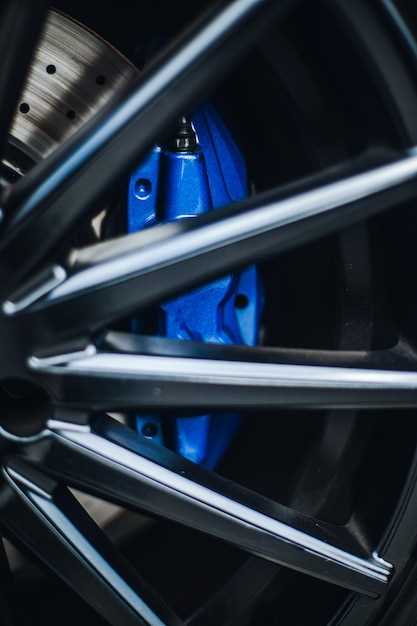
When it comes to heavy trucks, the choice of braking system is crucial for ensuring safety and efficiency on the road. Braking mechanisms play a significant role in the overall performance of these vehicles, with air and hydraulic systems being the two primary options available. Understanding the strengths and weaknesses of each system is essential for fleet managers, truck operators, and anyone involved in the transport industry.
Air brakes rely on compressed air to apply pressure to the brake pads, making them particularly effective for larger vehicles. This system provides a powerful and reliable braking force, enabling heavy trucks to come to a stop quickly, even under significant load. On the other hand, hydraulic brakes use fluid pressure to create braking force, offering a smoother operation and immediate response time. While both systems have proven their effectiveness, their operational mechanics and maintenance requirements differ significantly.
This article will delve into a detailed comparison of air and hydraulic brakes for heavy trucks, exploring aspects such as efficiency, maintenance, reliability, and application scenarios. By evaluating these factors, we aim to provide a comprehensive understanding of which braking system best suits the needs of heavy-duty vehicles.
Understanding the Mechanism and Operation of Air Brakes

Air brakes are a critical component of heavy-duty trucks, designed to provide reliable and effective stopping power under various driving conditions. The system operates primarily on compressed air, utilizing its pressure to activate the braking mechanism. This method is particularly advantageous for large vehicles, where traditional hydraulic brakes may struggle due to their weight and size.
The primary components of an air brake system include the air compressor, air tanks, brake chambers, and the brake pads or shoes. The air compressor generates compressed air from the engine, which is stored in the air tanks. When the driver applies the brake pedal, air is released from the tanks into the brake chambers, where it pushes a diaphragm or piston that engages the brake pads against the wheel drums or rotors.
One significant advantage of air brakes is their ability to maintain consistent performance, even in extreme conditions. The system can handle large amounts of heat generated during braking without the risk of fade that can occur with hydraulic systems. Additionally, air brakes are equipped with automatic adjustment features, ensuring the brake components remain properly aligned and effective over time.
Furthermore, air brakes feature a fail-safe design. In the event of a system failure, a spring-loaded mechanism will engage, providing emergency braking to prevent catastrophic situations. This adds an extra layer of safety, making air brakes a preferred choice for heavy-duty applications.
Overall, the combination of powerful stopping capability, durability, and safety features makes air brakes an essential system for heavy-duty trucks, ensuring they operate efficiently and reliably on the road.
Advantages and Disadvantages of Hydraulic Braking Systems
Hydraulic braking systems are widely used in heavy-duty trucks due to their efficiency and reliability. One of the primary advantages of hydraulic brakes is their ability to provide consistent and proportional braking force. This is particularly beneficial for heavy trucks, which require powerful stopping capabilities to handle their weight, especially when loaded. The design of hydraulic systems allows for effective distribution of force across all wheels, enhancing vehicle control during braking.
Another strength of hydraulic systems is their responsiveness. The brake pedal directly engages the hydraulic fluid, resulting in quick and precise activation of the brakes. This immediacy is crucial for heavy-duty applications where stopping distance can greatly impact safety. Additionally, hydraulic systems are generally easier to maintain compared to air braking systems, as they involve fewer components that might require regular inspection and replacement.
However, hydraulic brakes also have their disadvantages. One significant drawback is their susceptibility to overheating. Prolonged use, such as on steep declines, can lead to brake fade, diminishing their effectiveness. Heavy trucks, which often face varying load weights, may experience inconsistencies in braking efficiency due to this issue.
Moreover, hydraulic systems can be more challenging to repair. While maintenance is straightforward, any significant failure in the system may require specialized tools and knowledge, potentially leading to higher repair costs and longer downtimes. Unlike pneumatic systems, which can store air pressure for backup, hydraulic systems do not offer such redundancy, making them potentially less reliable in emergency situations.
In summary, while hydraulic braking systems offer notable advantages in terms of performance and ease of maintenance, they also come with challenges that truck operators must consider. Understanding these factors is essential for making informed decisions regarding braking systems for heavy-duty vehicles.
Maintenance and Cost Considerations for Heavy-Duty Braking Systems

When operating heavy-duty vehicles, maintenance and cost considerations for braking systems are critical for safety and efficiency. The two primary systems, air and hydraulic, require distinct approaches regarding upkeep and financial implications.
Air Braking Systems
Air brakes are predominately used in heavy trucks due to their reliability and effectiveness at high weights. However, their maintenance demands include:
- Regular Inspection: Routine checks on air tanks, lines, and chambers are essential to prevent leaks and ensure optimal performance.
- Compressor Maintenance: The air compressor must be serviced consistently to avoid failures that could lead to brake loss.
- Drainage: Moisture in air tanks must be drained regularly to prevent freezing and corrosion.
The costs associated with air braking systems often include:
- Replacement Components: Brake pads, valves, and chambers can incur significant costs over time.
- Labor Costs: Skilled technicians are often necessary for specialized maintenance.
- Inspection Fees: Annual inspections may require extensive checks that add to overall expenses.
Hydraulic Braking Systems
Hydraulic systems, while less common in heavy-duty applications, have their own maintenance requirements:
- Fluid Checks: Regular inspection of brake fluid levels is crucial, as low levels can lead to brake failure.
- Brake Line Integrity: Hoses and lines must be checked for wear or leaks to ensure safe operation.
- Pad Replacement: Brake pads should be monitored and replaced frequently to maintain effective stopping power.
Cost factors for hydraulic braking systems include:
- Fluid Replacement: Periodic fluid changes can add to the operating costs.
- Parts Accessibility: Finding specific components may lead to higher prices and longer wait times.
- Lesser DIY Options: Complexities in hydraulic systems may require professional service, increasing overall expenses.
Ultimately, choosing between air and hydraulic braking systems involves not just an understanding of their performance characteristics, but also the long-term maintenance requirements and associated costs critical to the longevity and safety of heavy-duty vehicles.




